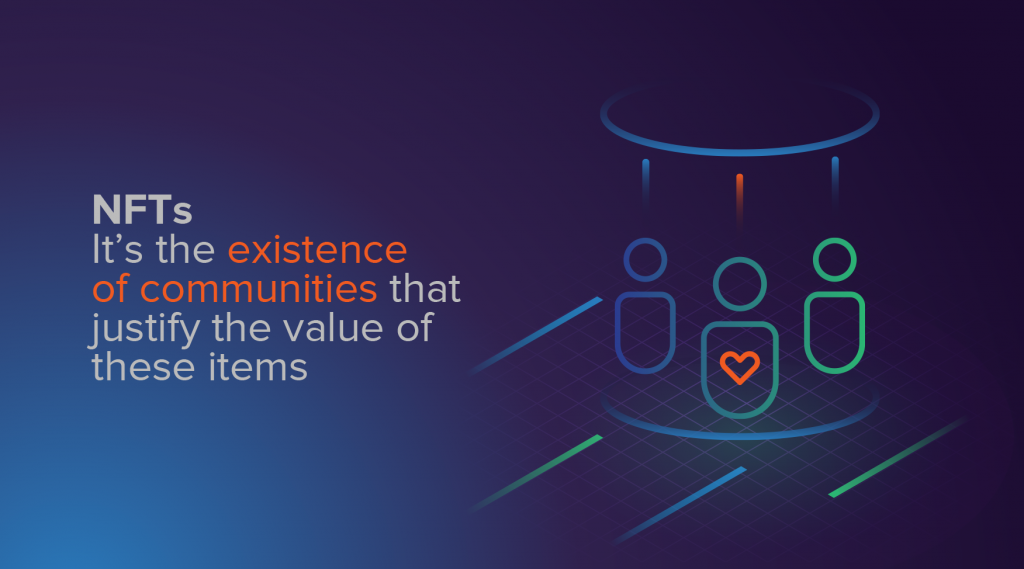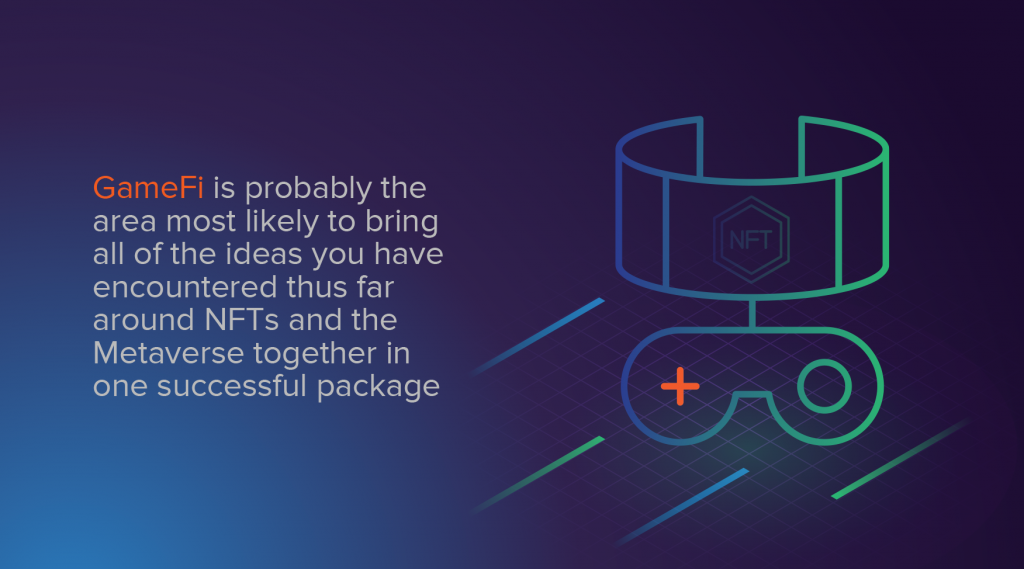The Only NFT / Metaverse Article You Need to Read This Year (After You’ve Read the First One!)

Welcome back! Okay, so, we’re in the somewhat interesting position of adding a Part 2 to our popular NFT/Metaverse article from last year, but in a completely different kind of market. Part 1 was published at the beginning of 2022 when NFT mania was in full swing. Part 2 is to be published in the middle of 2023 when the brutal bear market seems to be over for at least some major cryptocurrencies.
For our part, we did raise the alarm that it was a bubble, and it burst unceremoniously when capital started fleeing crypto (and other risk assets) in anticipation of tighter central bank policies stemming from the post-pandemic inflation we’ve all been living with. As Warren Buffet says: “it’s only when the tide goes out that you discover who has been swimming naked.”
The absence of mania surrounding NFTs and the Metaverse is also an opportunity to take a sober look at the space, as well as fill in the details of what these technologies are really going to be about when the novelty of swapping crypto thumbnails wears off.
We spent quite a few column inches last time around presenting the core principles of the technology on the one hand while warning of bubbles and the misuse of buzzwords on the other. They say that bear markets in crypto are the perfect time to build, so, this time we’d like to get a little deeper into the use cases beyond the ones you may be familiar with.
Solutions looking for problems?
It’s perhaps a little unkind to refer to NFTs and the Metaverse as solutions looking for problems, but, at least in the case of NFTs, the manner in which they’ve come to the public’s attention certainly leaves them open to this criticism.
One of the first defenses that NFT aficionados almost invariably mount to this criticism is to refer to “community” as being the real point behind these collectibles. You hear a lot about community in the NFT space. However, when you look a little closer, you find that often the word refers to:
- Discord groups employed to generate a buzz when an upcoming NFT collection is due to drop.
- Exclusive chat groups for holders of certain NFT collections such as the CryptoPunks or Bored Ape Yacht Club.
In both cases, it’s the existence of communities that justify the value of these items by talking them up and making others want to be part of the club.

And what do they get by being in the club? Exclusive merch, access to live events, voting rights, and so on. Essentially fan club-type perks that certainly pale next to the cost of admission. After all, some of these images have sold for hundreds of thousands, even millions, of dollars. In hindsight, many of these “perks” seem like a sort of afterthought hastened by the still quite valid question: “What do I need the real thing for when I can just take a screenshot?”
More than just a killer app
To play devil’s advocate for a moment, the NFT craze we saw over the past few years is strangely reminiscent of the craze around purchasing and squatting on URLs in the late 1990s and early 2000s. To confuse the World Wide Web as being nothing more than those meaningless domain names is like confusing the technology behind non-fungible tokens with the asinine practice of trying to get rich from collecting and trading “rare” crypto GIFs.
This isn’t to say that it’s not a real thing, just that there’s much more to the NFT technology than just that. Ethereum went through a similar thing back in 2017 when its first “killer app” became the ICO (initial coin offering), a permissionless way of crowdfunding. You don’t hear very much about ICOs nowadays, but Ethereum itself is still alive and kicking.
You may have seen Meta recently moving to integrate NFTs on its platforms. This step allows for owners of these collectibles who choose to use them as their social media avatars to have some way of verifying that they do in fact own them, rather than just posting screenshots. Kind of like a blue checkmark for celebrities, or a certificate verifying that your Rolex is the real thing.
If none of this intrigues you or fills you with much confidence for the future of this technology, then perhaps we can excite you with some other notable use cases that are coming down the pipe. Keep the Rolex certificate in mind though, because it’s at the root of a lot of what NFTs are going to be useful for in the future.
Pro tip: Learn more about perspectives and legal issues of the Metaverse in our interview with Mikhail Morozkov, Head of one of our delivery units.
Verify all the things
Sticking with luxury goods for a moment, there’s been a great deal of interest from brands like Cartier and Prada in using NFTs as a way of authenticating the originality of their products. Since every NFT is a one-off, and every luxury bag, watch, or piece of jewelry is one of a limited run of unique serial numbers, the blockchain can be used to track and authenticate these items at every step of their journey. All that allows big brands to stay one step ahead of counterfeiters and helps secondary markets (recall the Hermes Birkin handbag in Part 1), as prospective buyers can easily verify the authenticity of an item before purchasing.
Further, considering the massive supply chain disruptions the global economy has experienced since the pandemic, including shortages in both materials and labor, price inflation, and delays. NFTs could introduce efficiencies, assurances, and engendering trust in a world where supply chain managers are forced to be much more adaptable when it comes to sourcing the materials and goods they require.
Combined with a mature technology like NFC (Near Field Communication), goods can easily and affordably be tagged. Regular updates can be embedded in the blockchain at different stages of their respective journeys using NFC readers. This isn’t just limited to luxury items or works of art. If there’s one thing that blockchains do better than almost any other technology, it’s verifying that something happened at a certain time and place in a tamperproof manner.
So, naturally, firms involved in supply chains of all types are currently clamoring to deploy this technology in order to maintain the highest standards at work at every stage of their respective products’ manufacture and distribution. From soft commodities like coffee, barley, and beef, to the myriad components that find their way into your smart devices.
An iPhone, for example, is manufactured using components sourced from over 40 different countries. Knowing where all the components came from, and ensuring that they are up to standard before making their way into your new device, is extremely valuable for a company like Apple that can justify the prices it charges by maintaining that its products are the very best in class.
Music to your ears
Moving on, the music industry is one that seems particularly ripe for disruption by blockchain technologies. The switch from physical copies of your favorite albums to streaming, while going some way to tackling the problems of piracy, and making music readily available and easy to access for all, hasn’t quite served the artists as well as many hoped that it would.
The streaming platforms have made out like bandits, but when you crunch the numbers, it’s only really the biggest stars who stand to gain anything by having their music streaming on platforms like Spotify and Apple Music.
When you’re making between $0.003 to $0.008 per stream, you really have to have an A-list type following in order for streams to be a meaningful source of income for you. Add to this the fact that most of these platforms are effectively black boxes that, as an artist, you have to trust to be playing fair, and blockchain starts to make a little more sense for musicians.
Back in the ICO days, a number of projects made convincing pitches about how, through the use of smart contracts and the blockchain, artists could use Web3 music streaming platforms to stream their music and receive micropayments directly from their listeners.
However, as with all great ideas, ideas in blockchain lack scalability putting the kibosh on many of these plans. But don’t be surprised if we start to see ideas like these re-emerging in a big way as these second and third-generation blockchains start scaling.
This is also partly why you may have heard a lot more about music NFTs in recent years than things like decentralized Spotify. NFTs have been a blockchain alternative to many of those aforementioned grand plans to disintermediate the streaming platforms. They have allowed artists to sell their music directly to their fans, grow their own communities and remain in control of their copyrights.
You can think of a music NFT as something like a digital vinyl release. Just like in the case of vinyl, collectors regard records as desirable in their own right, but the digital realm allows for all sorts of other innovations. For example, allowing artists to crowdfund an album before it’s made and then reward early backers with a percentage of that record’s streaming revenues.
Ideas like these allow fans to truly be backers of their favorite artists’ success, to be a part of the story and even earn money as a result of spotting a good thing early. Currently, this space is in its infancy with many rival projects developing their own variations on the above themes.
GameFi bringing it all together
You didn’t think we were going to leave the Metaverse out, did you?
As we tried to explain in Part 1, metaverses already exist. Last time we drew attention to how your smartphone is effectively a metaverse, of sorts, allowing you to dip into all manner of worlds at the tap of a screen. But the kind of metaverses that really bring all of the above together are online games.

While art NFTs may have been 2021’s killer app, blockchain-based gaming, or GameFi, as it has come to be known, is probably the area most likely to bring all of the ideas you have encountered thus far around NFTs and the Metaverse together in one successful package.
Consider the online games that the teenagers in your family (perhaps even many of the older members) have been obsessed with in recent years like Fortnite and League of Legends. These online worlds are functional metaverses in which many people spend a substantial part of their waking life in. They usually have currencies of their own, and in-game items that can be purchased, found, or won.
Again, as in the steaming example, the ecosystems, or economies, within these games are most often walled gardens owned and controlled by the companies behind these games.
By now you should be detecting the common thread here. Blockchain in general, and technologies like NFTs specifically, allow people to take ownership of digital items. So, your character’s kick-ass limited edition skin, a certain in-game weapon, or trophy, are all digital assets that you could own and control as NFTs. Perhaps even taking them with you to other compatible games and online worlds, being able to sell them on a secondary market, or even post them as collateral in a DeFi platform in exchange for a loan.
This is likely to be the area where NFTs gain the most traction as here they are most certainly not solutions searching for problems. Quite the opposite, not only are they solutions that gamers have eagerly anticipated for many years, but they also make the games themselves feel that much more real.
Imagine owning the parcel of land on which your digital avatar’s house is built, complete with all of your collected NFT artwork on the walls. These things are currently happening and all it will take to bring them to the mainstream is a blockbuster success, like Fortnite.
It’s a revolution that’s taking place from both the top-down world of big game developers exploring how to integrate blockchain tech into their already successful games, as well as from ground-up blockchain-based games, like Axie Infinity, that took the world by storm last year, and virtual worlds like Decentraland, that have been around for years.
Simply put, the reason GameFi seems like the best bet for these technologies is that the world of gaming has an already captive audience of loyal lifestyle users that numbers in the billions and is constantly growing.
Read on
Despite being quite reserved about the more speculative, bubbly sides of these markets, it’s a space we’re incredibly excited about here at Devexperts and eager to get our development chops stuck into.
You can read more about a highly innovative project that we at Devexperts have been a part of here that combines music and video and brings both to the world of blockchain and NFTs.